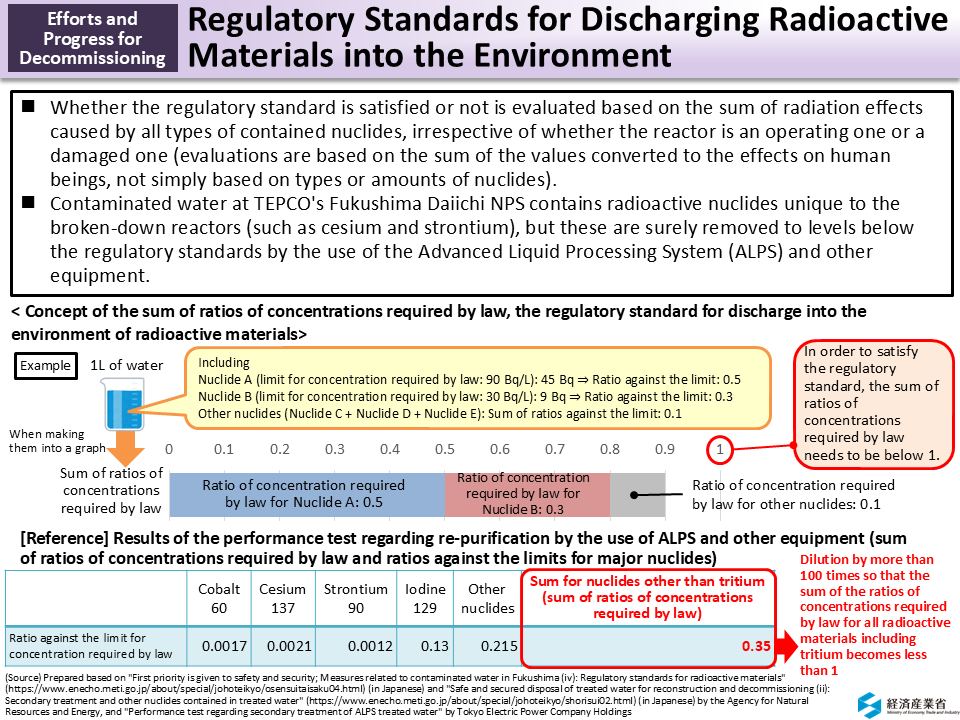Regulatory Standards for Discharging Radioactive Materials into the Environment
Regulatory standards for radioactive materials contained in liquid and gaseous waste that are discharged into the environment from nuclear power stations, etc. in Japan are set on the basis that an annual public exposure dose additionally caused by discharged radioactive materials (effects on human bodies) will not exceed 1 mSv, according to the recommendations of the International Commission on Radiological Protection (ICRP). More specifically, the maximum concentration for a radioactive material is set so that, supposing that a person continues to drink 2L of water containing that type of radioactive material every day from birth until becoming 70 years old, the resulting dose rate becomes 1 mSv per year on average. The limit thus set for each radioactive material is called the “limit for concentration required by law.”
Generally, liquid and gaseous waste discharged from a nuclear power station, etc. contains multiple radionuclides. Therefore, when effects of multiple radionuclides are supposed, the concept of the sum of ratios of concentrations required by law as described in Ministerial Notice is adopted in comprehensive consideration of the effects of all radionuclides contained in the waste. Concentration levels are regulated so that the sum does not exceed 1.
When disposing of ALPS treated water, whether the sum of ratios of concentrations required by law thus obtained is below 1 is to be checked in the same manner as for other nuclear power stations, etc. currently under operation. At Tokyo Electric Power Company (TEPCO)'s Fukushima Daiichi NPS, treatment using ALPS and other equipment is conducted to reduce concentrations of radioactive materials other than tritium, including those unique to the damaged reactors (such as cesium and strontium), so that their concentrations do not exceed the regulatory standards.
Also with regard to tritium, which is difficult to remove by ALPS or other equipment, dilution for reducing its concentration (by 100 times or more with sea water) is conducted in order to ensure that the sum of ratios of concentrations required by law for all radioactive materials, including tritium, remains below 1. Through the dilution, concentrations of nuclides contained in ALPS treated water other than tritium, which are already reduced to below their regulatory standards, are also reduced by 100 times or more and safety can be further ensured.
Annual radiation effects when discharging ALPS treated water into the sea after dilution were assessed to be approx. 1/1,000,000 to approx. 1/70,000 of the exposure doses (2.1 mSv/y) of Japanese people from natural radiation (assessment results as of February 2023). (Related to p.18 of Vol. 2, “Assessment of the Radiological Impact of Discharge of ALPS Treated Water into the Sea”)
- Included in this reference material on March 31, 2022
- Updated on March 31, 2025

